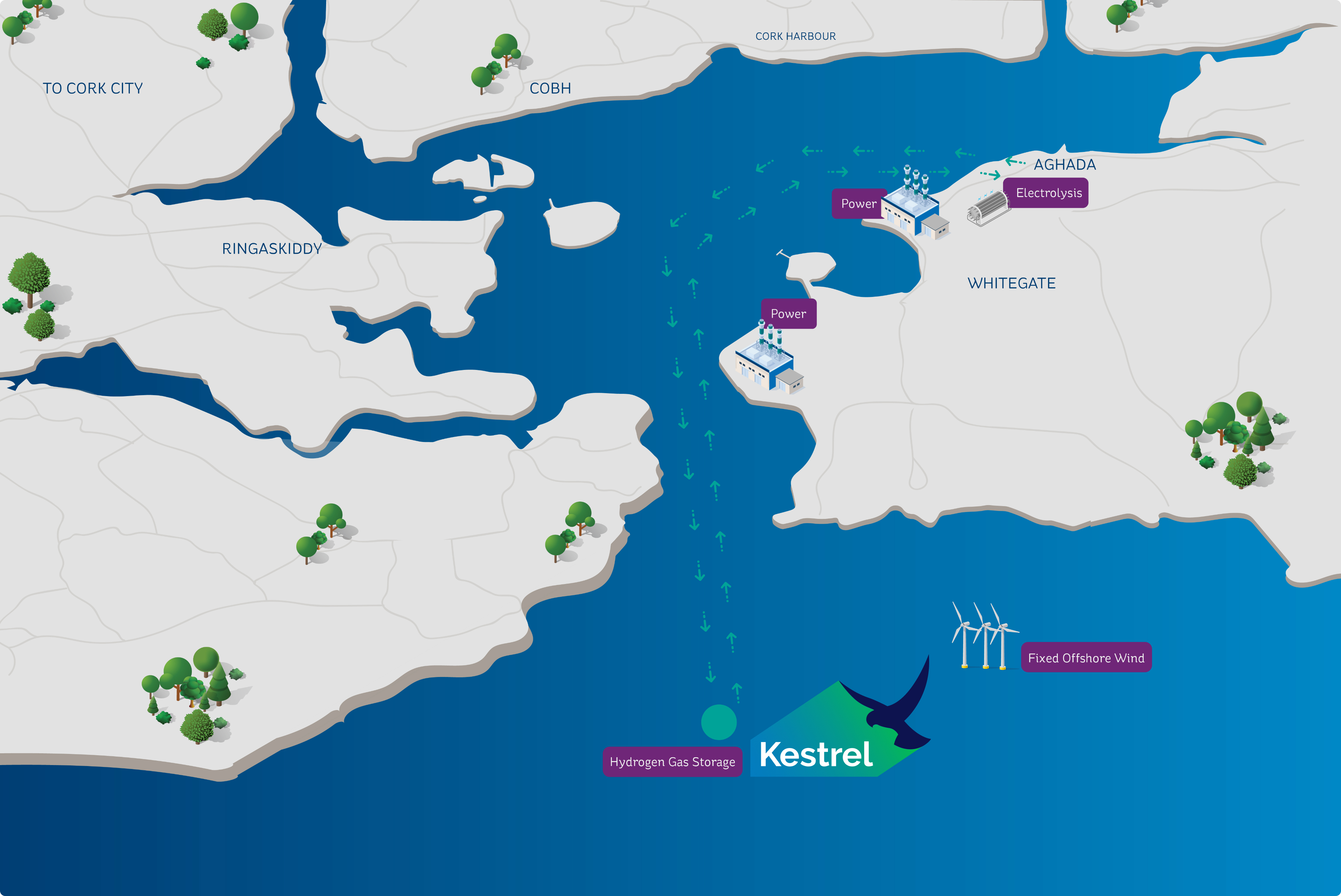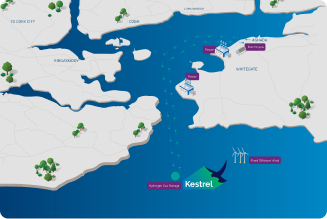The Kinsale Head Gas Field was discovered in 1971 by the US Company Marathon Oil Corporation. The field which is 50 kilometres off the coast of Co Cork, in 90 metres water depth and at c. 57 billion cubic metres (twice the size of Corrib) is still the largest single hydrocarbon discovery made offshore Ireland.
The Kinsale Head natural gas reservoir is located in reservoirs some 840 metres below sea level in the Celtic Sea, with the gas produced to surface through two fixed steel production platforms. Production began in 1978, initially supplying gas to the Cork area including the Aghada power station and subsequently to the rest of the country.
Several satellite gas fields were discovered and tied back to the platforms through 1990-2003, including Ballycotton, Southwest Kinsale and Seven Heads.
The Southwest Kinsale Field was redeveloped as Ireland’s first offshore gas storage facility and operated from 2001 to 2017.
In 2009, Marathon Oil sold the Kinsale Head gas fields to Petronas, the Malaysian state-owned oil and gas exploration and production company. The fields continued to be safely operated by Kinsale Energy Limited, a wholly owned Petronas Irish subsidiary that was based in Cork.
All the gas platforms and production wells have now been successfully decommissioned after 42 years of safe and reliable operations.


